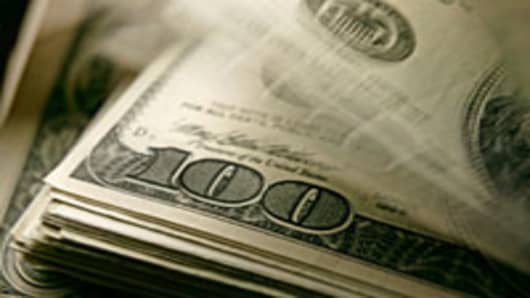As regular investors fled the unprecedented stock market volatility this month, purchases by company executives relative to sales hit the highest levels since 1998, according to one of the more widely watched insider buying newsletters on Wall Street.
There was an almost eight-fold increase in buy transactions over two weeks and 16-fold jump during the last three weeks, according to Vickers Weekly Insider, which is published by Argus Research.
The ratio of sale transactions vs. buy transactions dropped to 0.35, the lowest reading since during the bull market in 1998 and one of the rare occasions when purchases actually outnumbered sales, said the Vickers report from Monday.
A ratio below 1.0 is meaningful because selling typically always outweighs buying, because of options expiration and other factors. The ratio was last below one in March of 2009, the month the current bull market began.
“With market volatility increasing last week, corporate executives and directors have seized the opportunity to increase their holdings,” said David Coleman of Vickers, in the report. “Insiders have turned bullish. Very bullish.”
The Dow Jones Industrial Average moved more than 400 points four days in a row last week for the first time in the benchmark’s history. The gyrations caused retail investors to yank more money out of equity mutual funds than they have during a single week since 2002, something we first told you about on Monday. (Click here to go to Volatility Sparks Biggest Fund Exodus Since 2002.)
Traders, for the most part, believe insider buying has a spotty track record as far as market timing is concerned, because sometimes the purchases are just token public relations ploys. Other times, the insiders don’t have quite the insight that one might think they have, as was the case during a pop in insider buying in 2008 before the bear market lows. However, the intensity of this recent buying has certainly gotten people’s attention.
“I’m a skeptical sort, but have noticed the insider buying in some of the stocks I own and monitor and I am unabashedly impressed,” said Stephen Weiss of Short Hills Capital and formerly of SAC Capital.
On Aug. 8, when the turmoil began, the S&P 500 plunged almost 7 percent as investors got their first chance to flee risk after the Standard & Poor’s downgrade of the U.S. long-term credit rating. Insiders did the opposite however, as 47 buy transactions were counted among CEOs, CFOs and COOs of companies during that trading day, according to StreetInsider.com.
“This data should be highlighted in conjunction with all the negativity in the market,” according to a report from the research web site after the close that day. “The data suggests these insiders see major value in their company stocks at current levels and are looking to put their personal money to work to buy on the cheap.”
StreetInsider cited purchases by Jon Corzine, the CEO of MF Global, and Jeffrey Mezger, the CEO of KB Home . Among the more notable purchases that came later in the week were insiders from JPMorgan , Chesapeake Energy , NYSE Euronext , Kraft , General Motors and Corning .
InsiderScore.com, which tracks the performance of insiders’ purchases, gave particular weight to the $877,000 purchase on Aug. 10 by Jim Flaws, CFO of Corning, and the $251,000 purchase by GM CEO Daniel Akerson on Aug. 9.
“We like that Akerson, who took home a base salary of $567,000 last year, continues to put his cash to work,” stated an InsiderScore report that day. Flaws’ purchase “is his first since he made an exceptionally well-timed call in November 2008, when the stock hit what is now an eight-year low.”
The stark contrast in reactions between investors and CEOs may be a function of time horizon. One would expect an executive to have a much longer holding period than investors today, especially when you take into account all the day traders and high-frequency hedge funds out there.
“While valuations appear attractive, the question remains, is this a buying opportunity?” wrote Larry Adam, chief investment strategist for Deutsche Bank Private Wealth Management, in a note. “Depending on your investment horizon, the answer is both ‘yes’ and ‘no.’ For long-term buy and hold investors, the favorable view on equities is based on attractive valuations.”
Adam cited the fact that the average dividend yield for companies in the S&P 500 is the same as the 10-year Treasury yield for only the second time over the past 30 years. Executives probably feel at these levels, their company’s growth prospects are better over 10 years than a Treasury note.
For the best market insight, catch 'Fast Money' each night at 5pm ET, and the ‘Halftime Report’ each afternoon at 12:30 ET on CNBC.
______________________________________________________
Got something to say? Send us an e-mail at fastmoney-web@cnbc.com and your comment might be posted on the Rapid Recap! If you'd prefer to make a comment, but not have it published on our Web site, send your message to fastmoney@cnbc.com.



